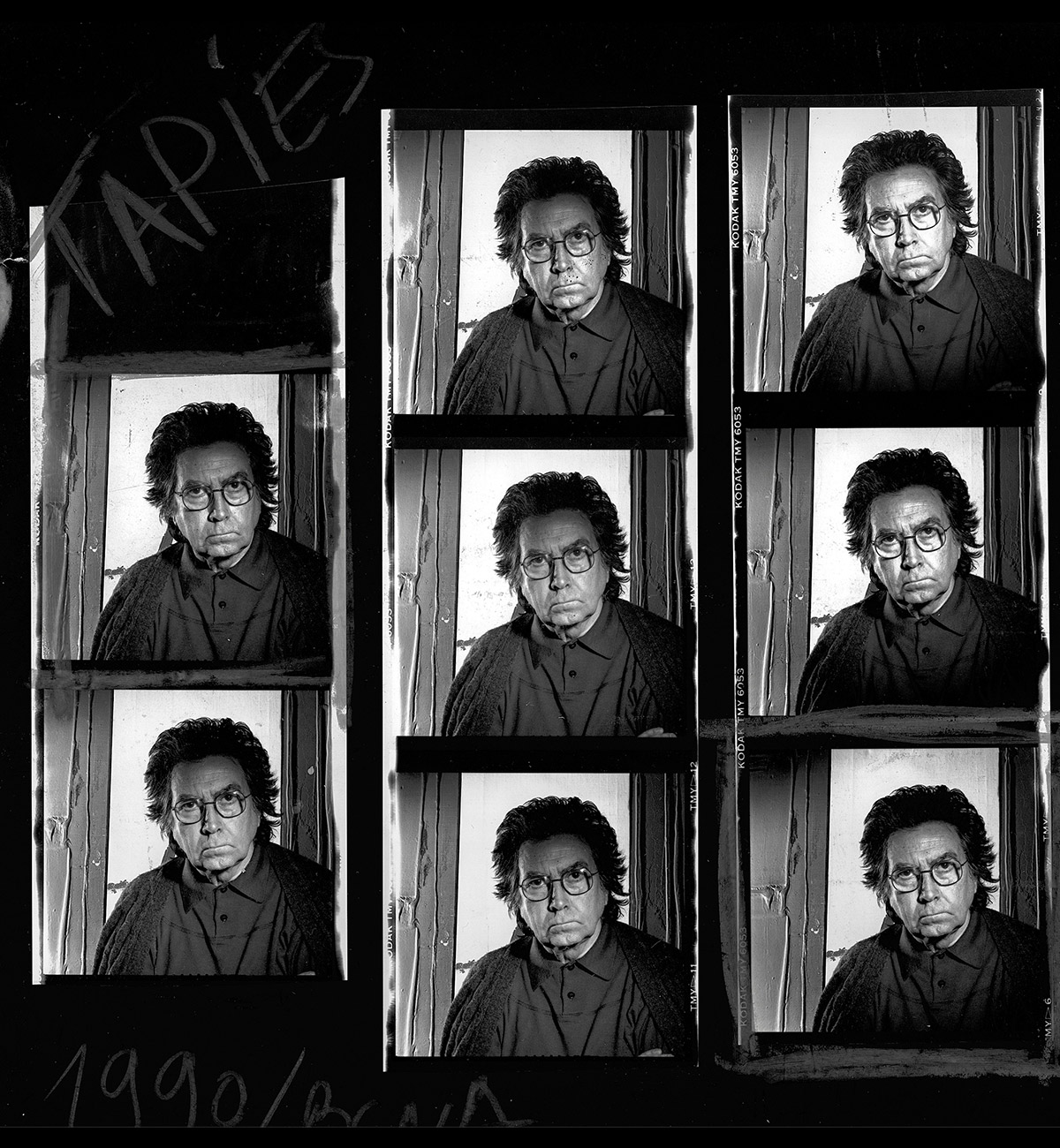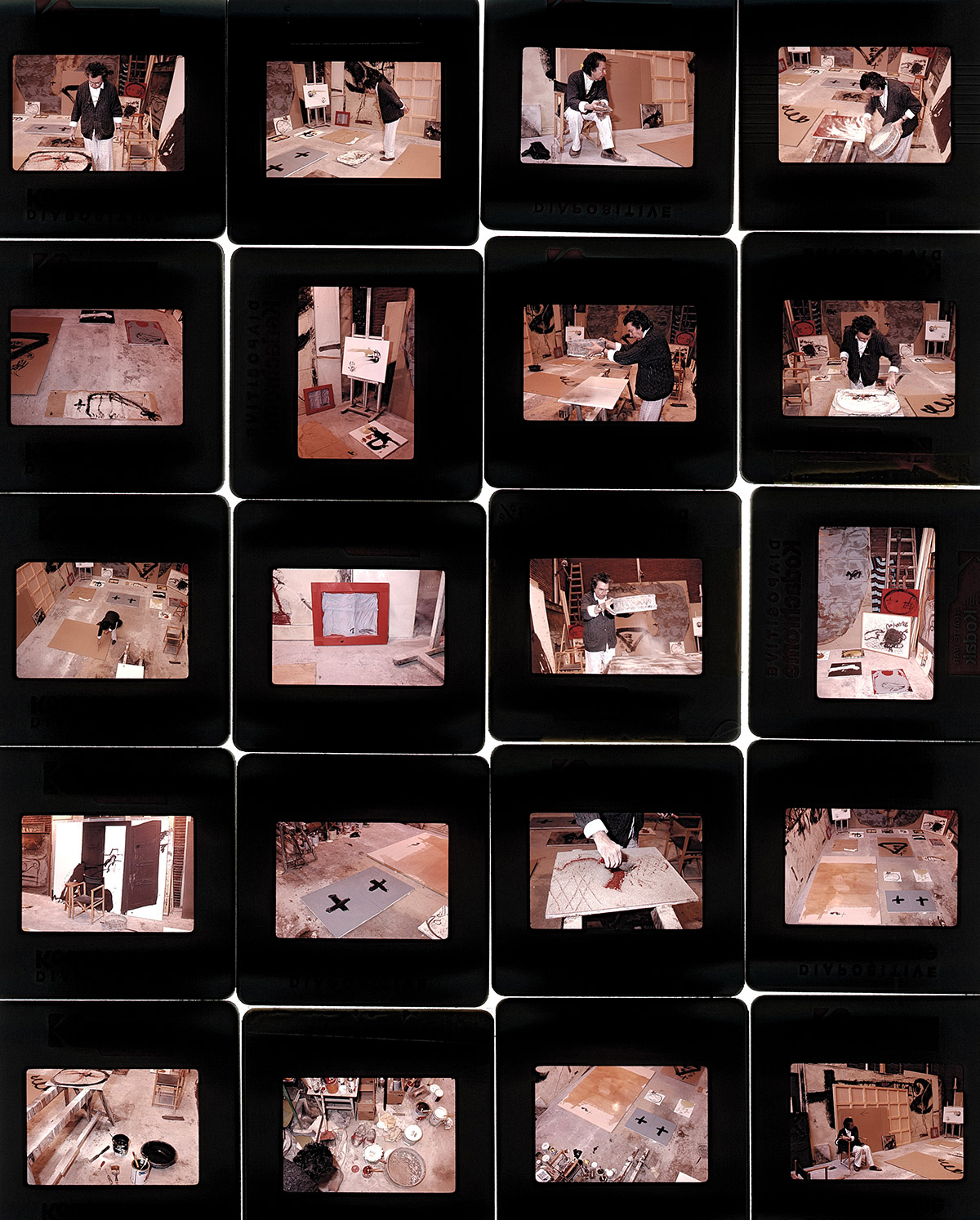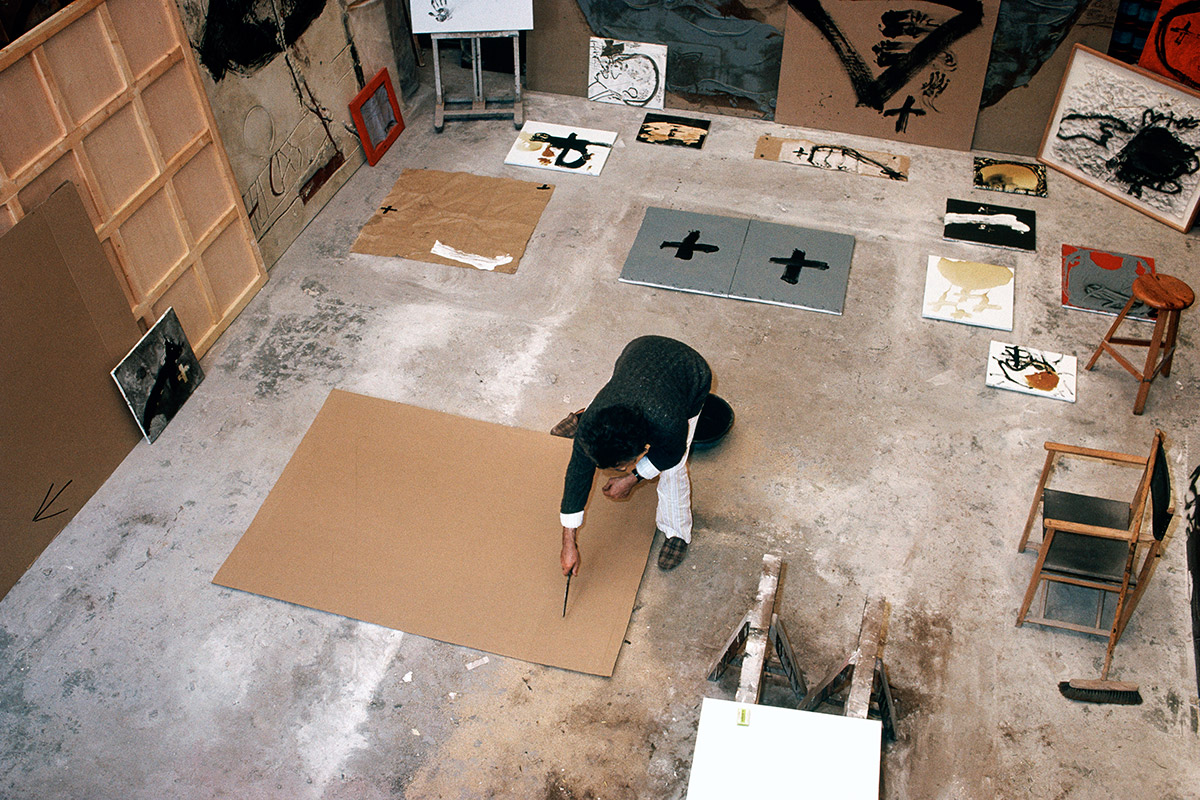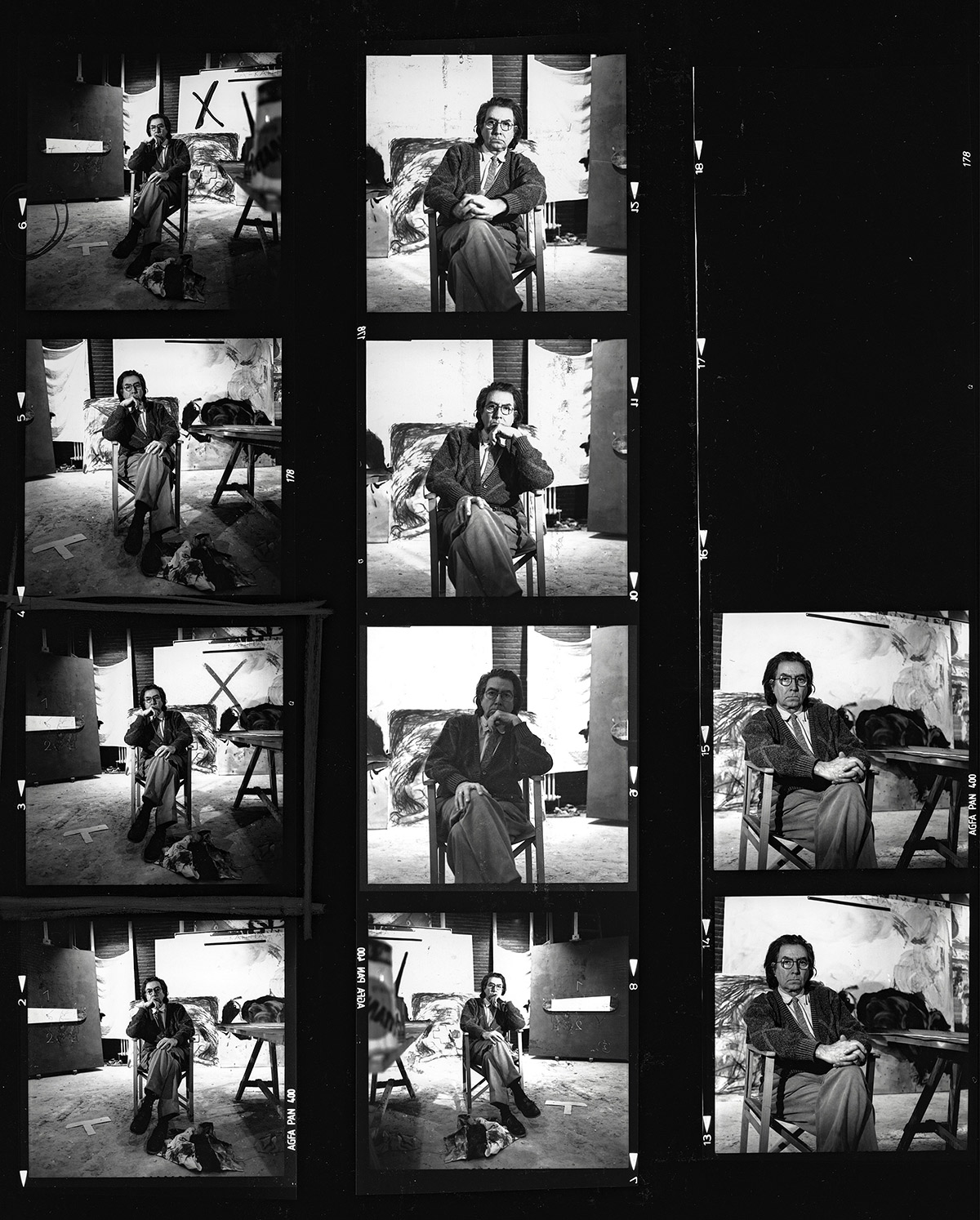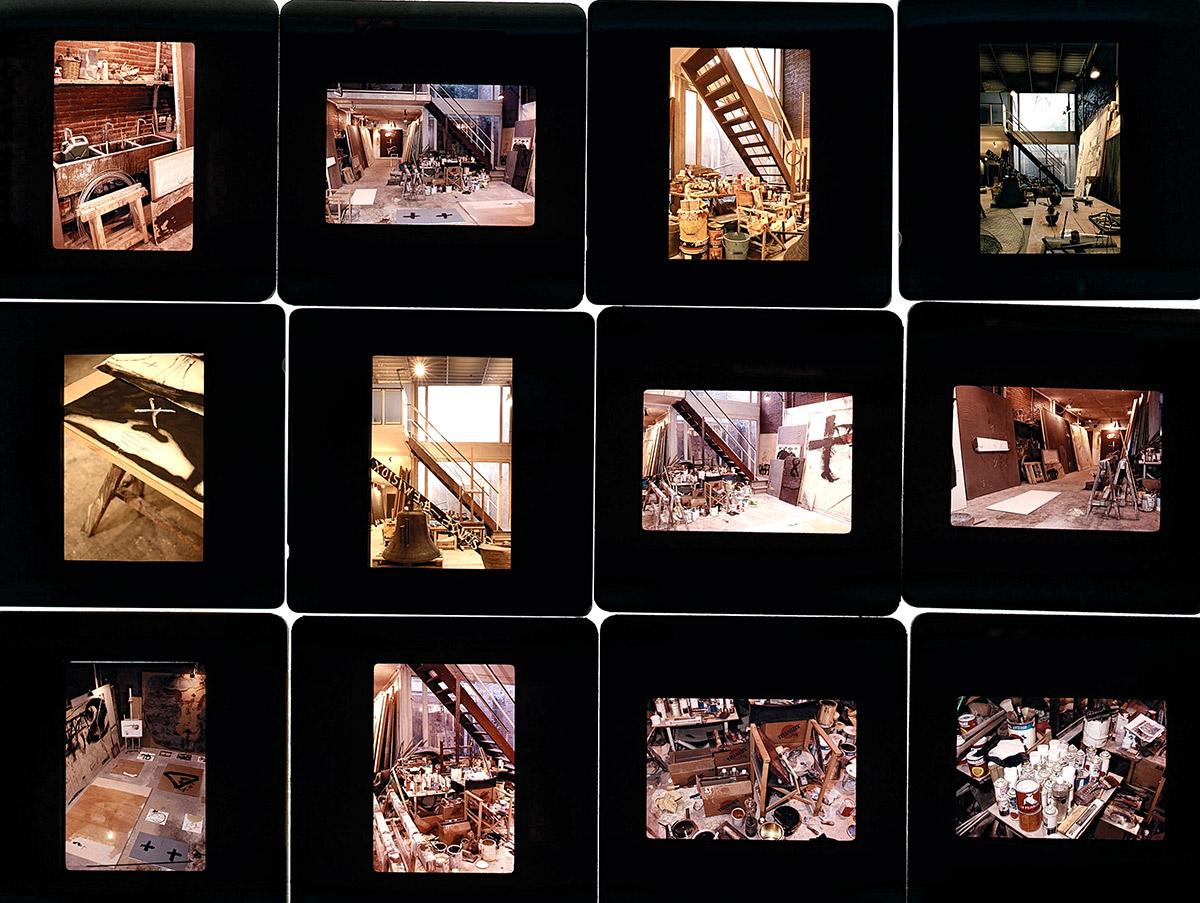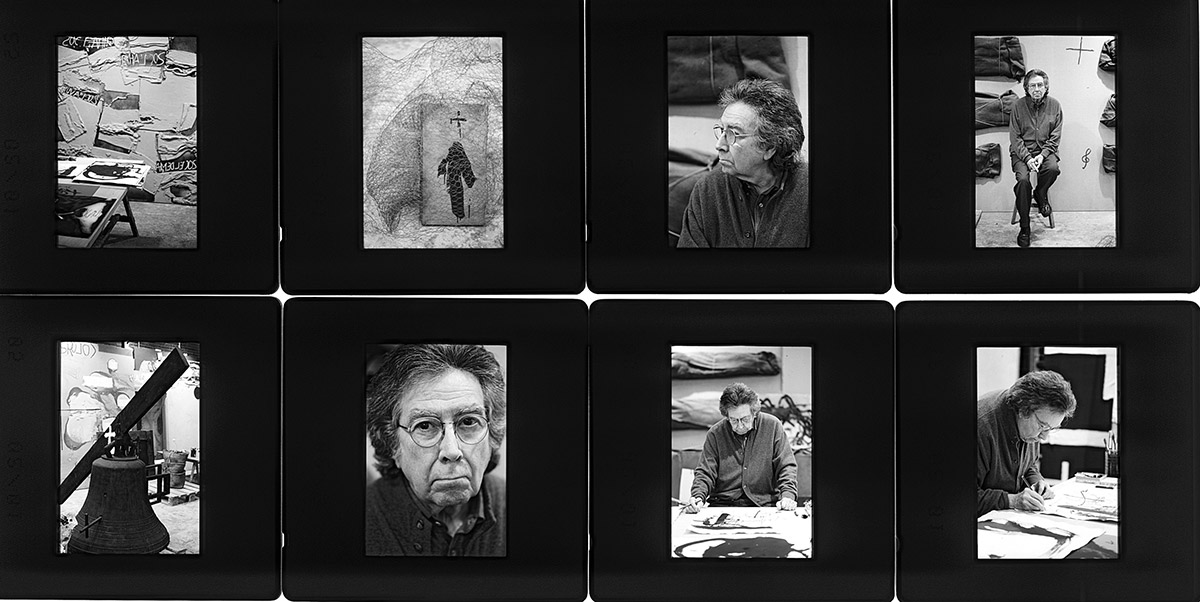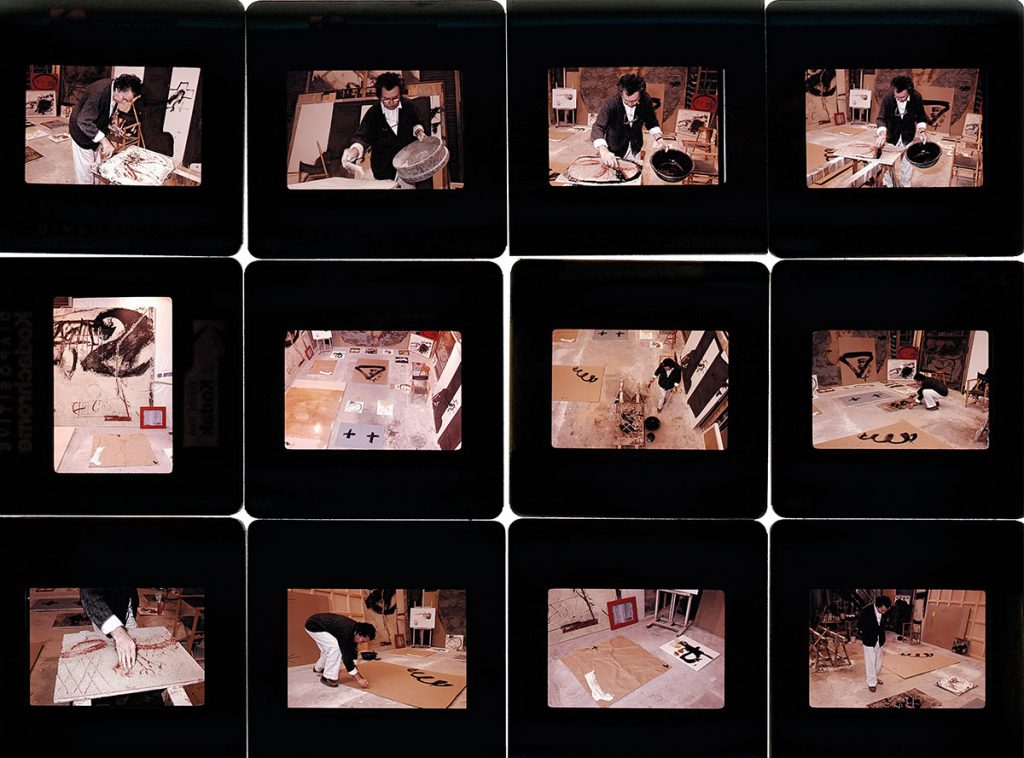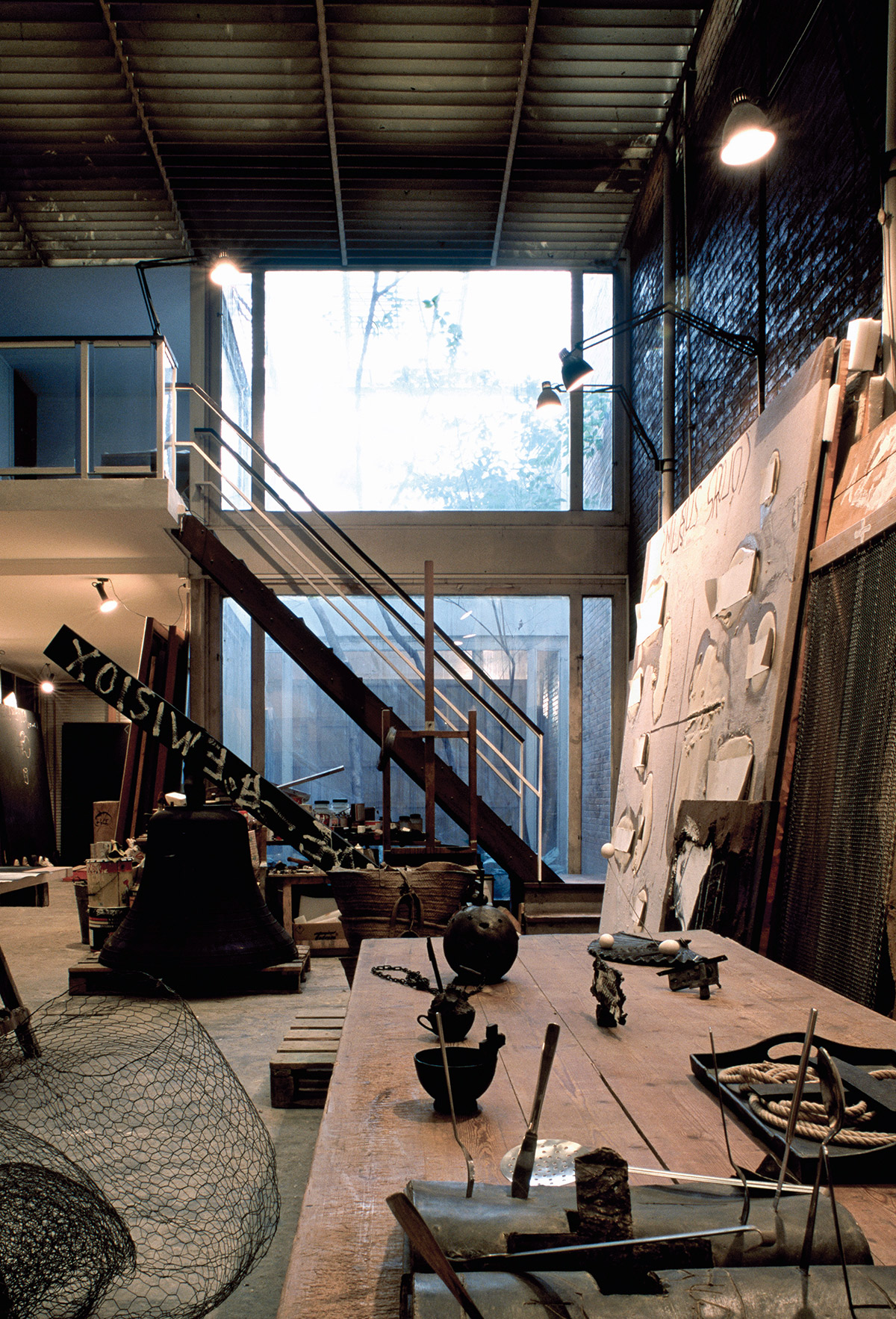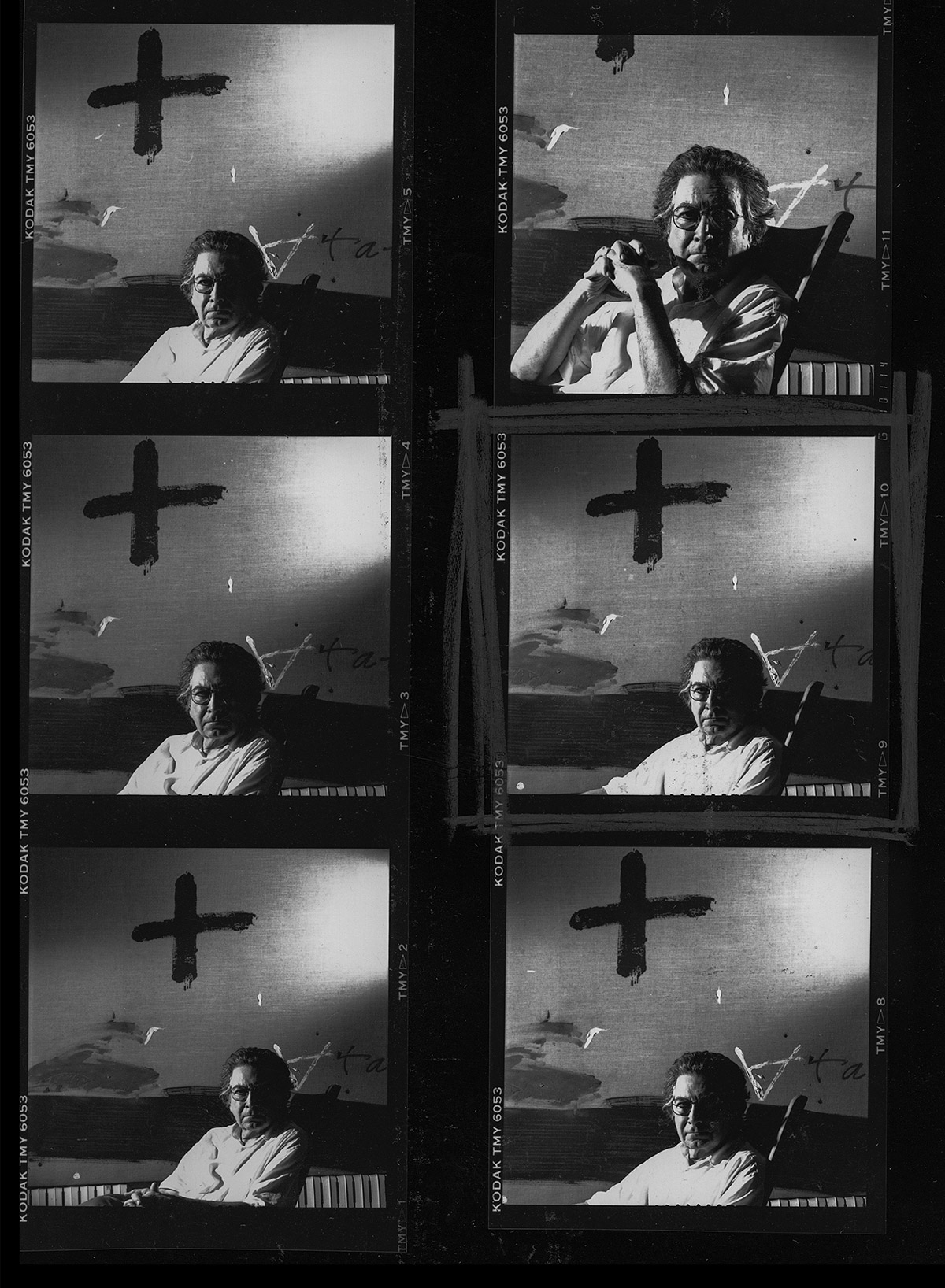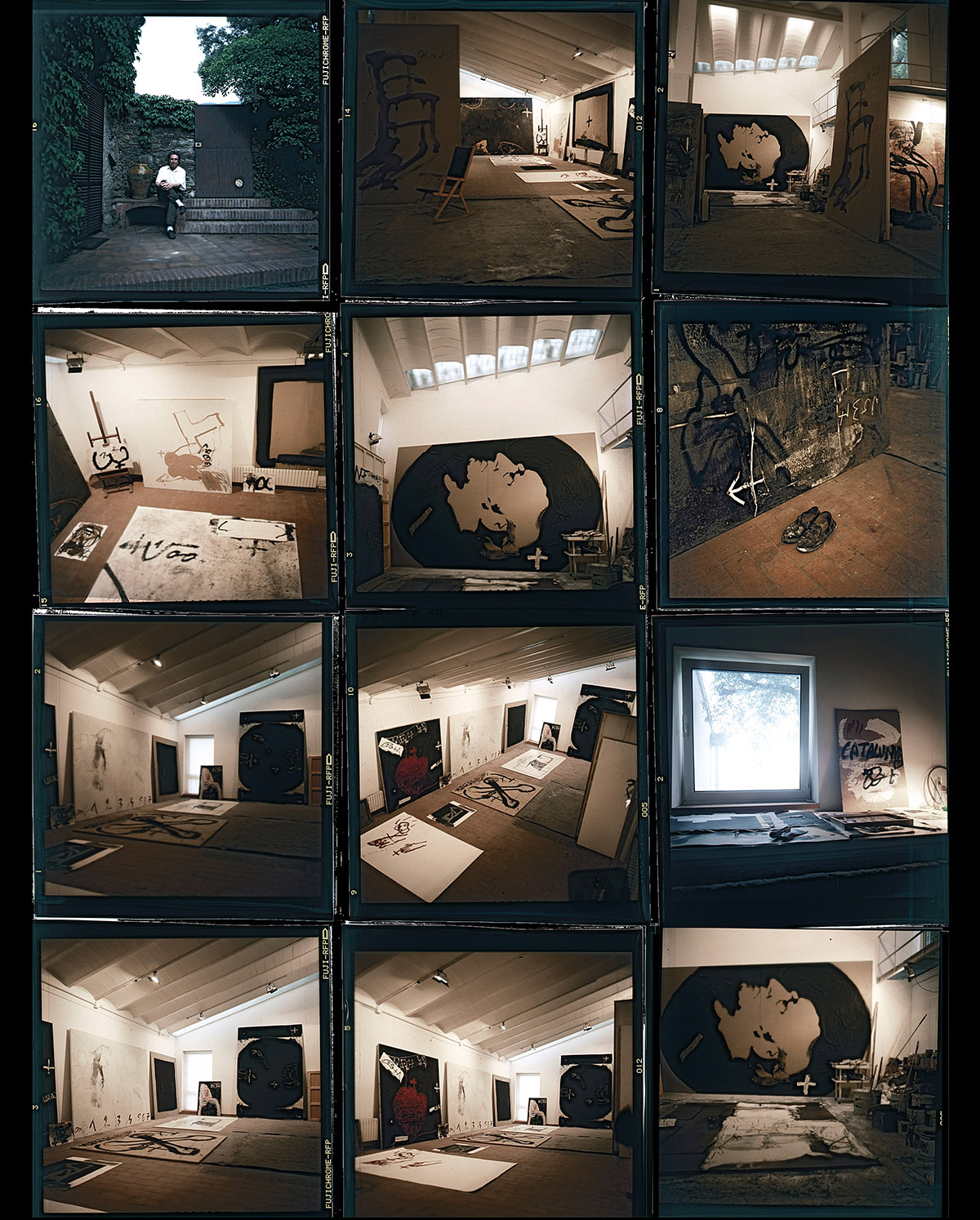Antoni Tàpies
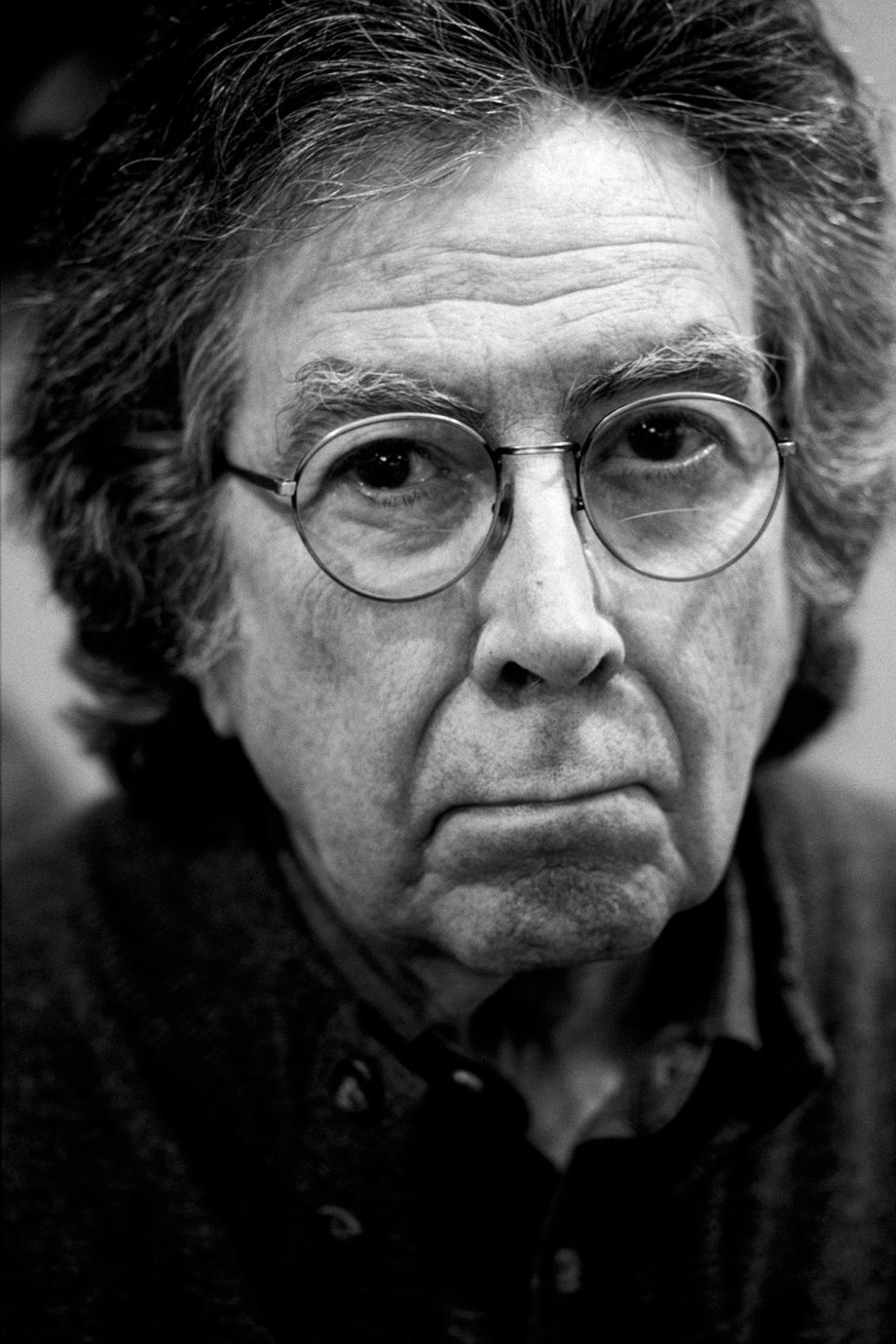
CONTACT SHEETS BY JEAN MARIE DEL MORAL
WORDS BY MANUEL NAVARRO
In December of this year marks the centenary of the birth of Antoni Tàpies i Puig. A self-taught painter and sculptor, a leading figure in informalism, considered one of the most prominent artists of the 20th century. He created a unique style within the avant-garde art, combining tradition and innovation within an abstract style full of symbolism, giving great importance to the material substrate of the work. His art and his persona served as an inspiration to a new generation of contemporary art market artists who value his ideas to achieve new goals.
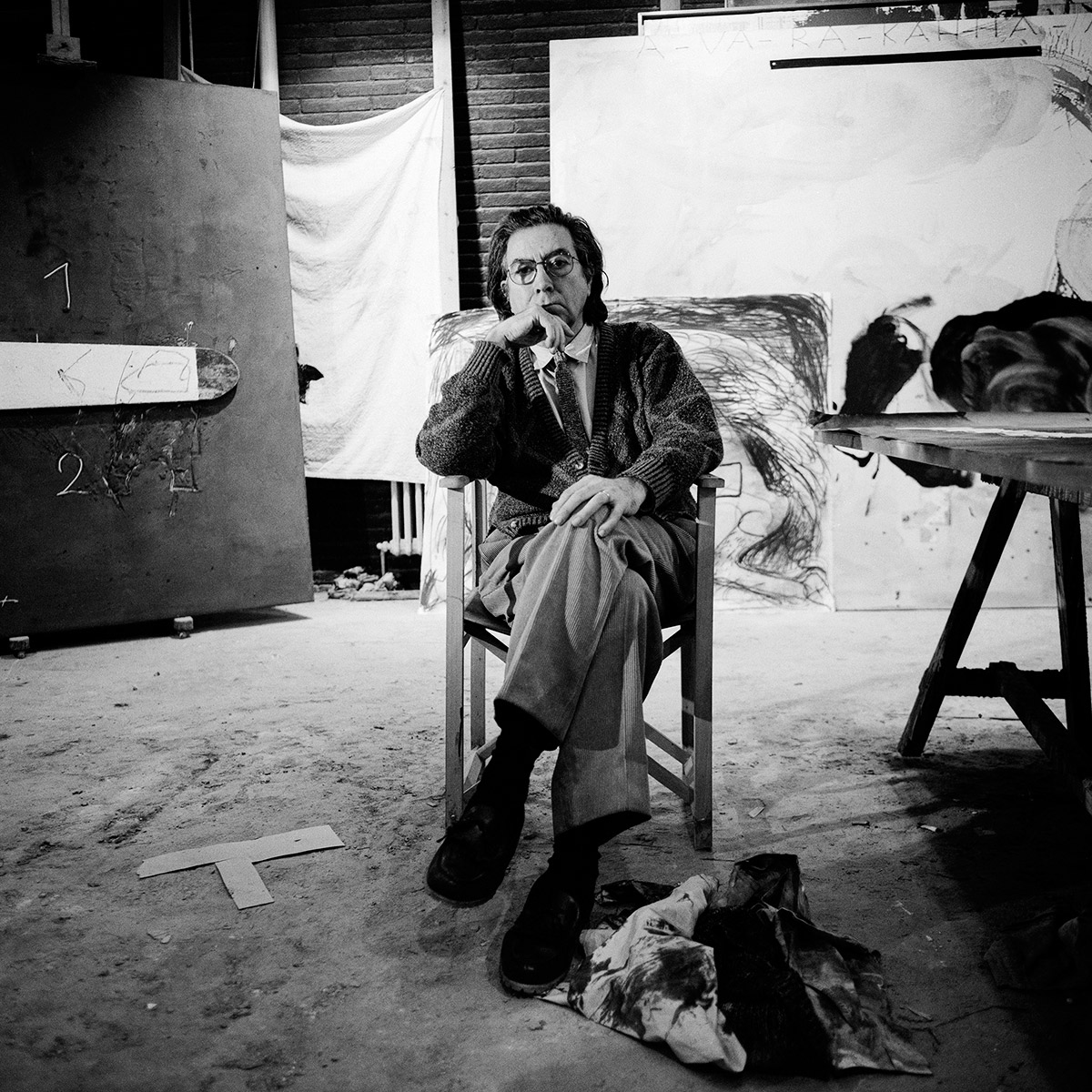
Taking advantage of the occasion of his centenary, our good friend Jean-Marie del Moral, an endless source of pleasant surprises, proposed for this issue of PWA to rescue some contact sheets of the Catalan artist. These are photographs taken in 1990 in his studio in Barcelona, which we show you in the following pages.
For those who don’t know what contact sheets are, I’ll explain it below, because their use nowadays is practically nonexistent due to the regularization of the medium into digital format. The procedure was commonly used in the early days of photography to obtain copies from photographic plates in large format cameras. With the development of 35mm format cameras, it became necessary, almost essential, and somewhat addictive to be able to select the images taken from among all those taken and to be able to observe the entire document in detail to analyze and plan the printing process that would be done for the selected shots. It involved placing the ordered negatives on photographic paper and giving them the necessary exposure with white light in the enlarger, and finally developing the paper to obtain the contact sheet with all the images from a roll of film on a single sheet of paper.
A contact sheet provides a wealth of information about any photographic session. Analyzing the sequence of images in the order they were taken can reveal many things about the photographer and the person being photographed if all the information is interpreted correctly. The fact that a photographer of Jean-Marie’s caliber provides us with this material on an artist like Tàpies gives me “gallina de piel”* as that great Dutch player and coach from the city where Tàpies was born, died, and became eternal used to say.
* “Gallina de piel”, “Goosebumps” or “piel de gallina” as it is correctly stated. An involuntary physiological phenomenon triggered by the activation of the nervous system in response to cold or intense emotions. The mentioned coach is Johan Cruyff, who at that time was learning Spanish and got the order of the words mixed up, causing a lot of sympathy among fans. “Goosebumps” could also refer to the symbolism and textures inherent in Tàpies’ work.
